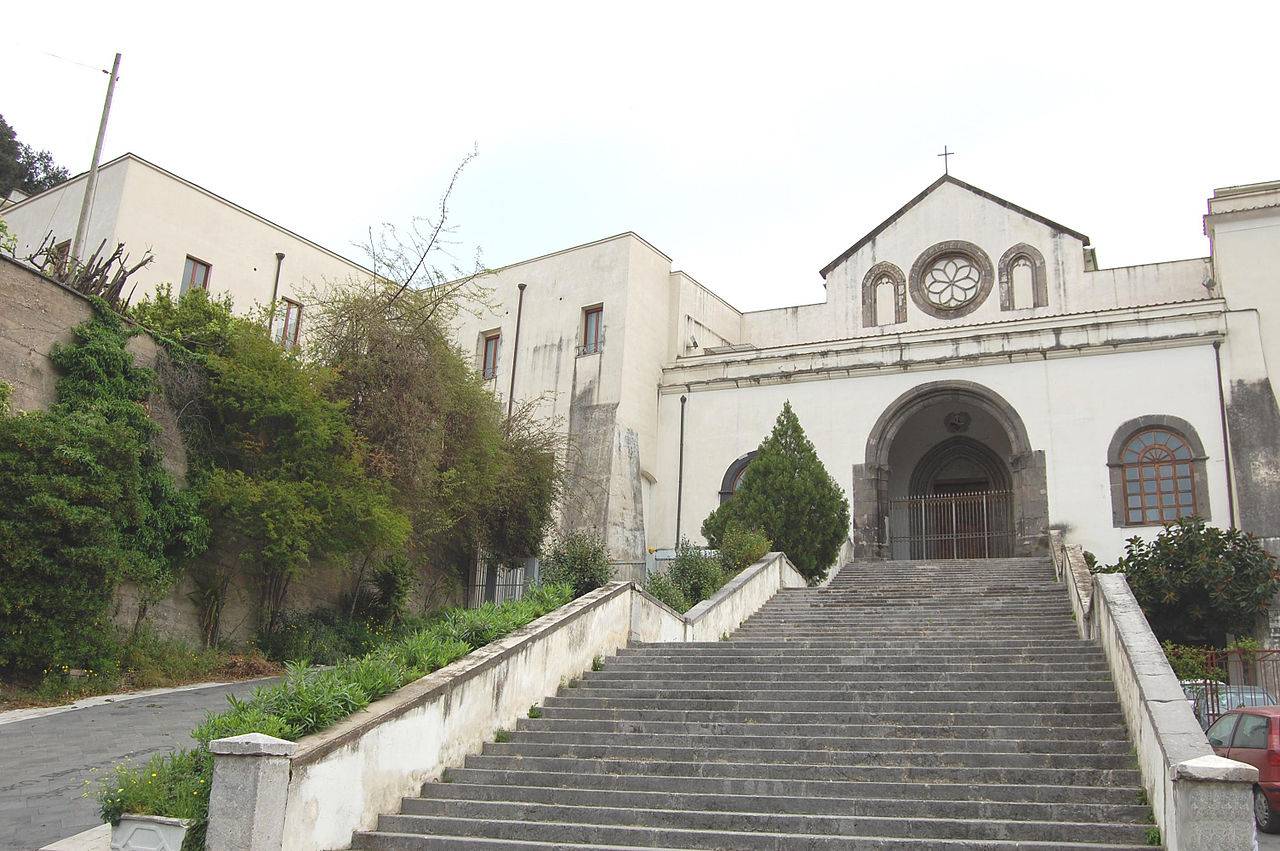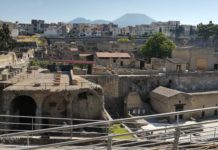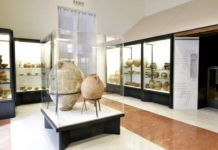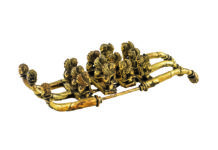A treasure to be discovered. Is the monastery of St. Antonio, one of the major cultural centers of the Agro Nocerino Sarnese, for the richness and rarity of the artistic heritage preserved in its aisles. Erected at the foot of the small hill of San Francesco in Nocera Inferiore (Salerno) in 1200, by the will of Filangieri (family of Norman origin arrived in the lands of Agro in the year Mille) and originally limited to the church (dedicated the Saint of Assisi, who perhaps lived in these places, during his trip to the Holy Land), the entire structure has undergone, over the centuries, several redevelopment projects that do not have, however, never changed the original Gothic style. One in particular, wanted by the family Carafa-Castriota Scandeberg, in the late 1500s, led to the construction of the “new” bell tower to replace the previous one (as evidenced by the large bell which bears a date of first melting the year 1368), together entrance porch with heavy gray tuff with round arch, and the addition – in extension to the transept – the two chapels dedicated to St. Anthony and the Immaculate Conception.[charme-gallery]
Other restorations were made in the seventeenth and eighteenth century up to the suppression of the convent on 28 January 1808. Only the church, through the efforts of the Arch of the Immaculate Conception, it was reopened for worship (and profoundly changed, between 1829 and 1831, thanks to the restoration work carried out by the architect Giovanni Rosalba) while the rest of the structure was first intended as a military barracks, and then at home for the homeless. In 1951 the monastery went to the Franciscans who, from that date, worked to the complete redesign of the structure by creating, inside the building, a true cultural center dedicated to the conservation of the artistic heritage of the religious complex. And whether it’s “heritage” there is little to object.[charme-gallery]
Inside the convent, in fact, the seat of the library “Sant’Antonio Dottore”, with a collection of books of more than 15 thousand volumes, as well as rare ancient manuscripts. Since 1965, moreover, the religious complex of St. Anthony was also chosen as the site of the Museum of the Agro Nocerino Sarnese, accepting part of the many archaeological finds from numerous excavations conducted in the surrounding area. Yet. Since 1995 the building has an extraordinary Pinacoteca obtained in the two large rooms of what was once the “School of the Novitiate”. This is the place where they proudly displayed several paintings (for the most part, these oils on canvas) by well-known Italian artists, dating from the XVI and XVIII centuries, recovered inside the convent thanks to ‘work of Father Guglielmo Salierno, but also sculptures and rare sixteenth century parchments. Among the paintings stands out an extraordinary round of 1600 depicting the Madonna and Child and the little St. John. The work looks like a copy of the “Madonna of the House of Alba” painted by Raffaello Sanzio between 1510 and 1511 and now on display at the National Gallery in Washington. This is a fact that is confirmed by the presence, in the convent of St. Antonio, until the second half of ‘600, the original work of the great Raffaello whose art came to influence not just the taste and the local artistic culture (not to If the largest local interpreter of classicism of Raffaello was Andrea Sabatini from Salerno in whose workshop are attributed many works in the Art Gallery of St. Antonio).[charme-gallery]
From a historical point of view, the convent of Nocera is related to one of the episodes discussed and at the same time dramatic history of the Church. During the fourteenth century, in fact, the building was the scene of the famous “conspiracy of the cardinals” plotted against Pope Urbano VI, at that time besieged by the troops of Charles III in the nearby castle park of Nocera. Just against the pontiff, in the halls of the monastery (the same ones that now house the exhibits of the archaeological museum) gave them selves meeting the cardinals Marino del Giudice, Giovanni da Amelia, Adam Easton, Gentile di Sangro, Bartolomeo di Coturno e Ludovico from Venice with intent to attract the Pope in the convent, here depose him, condemn him at the stake for heresy and then delete it.
The day was established January 13, 1385, but the Pope was warned by Cardinal Orsini and when the conspirators went to the castle to confer with him, had them arrested, tortured and then replacing them with lay cardinals loyal to him. Most of the conspirators was brutally executed. [charme-gallery]
Convento S. Antonio
Piazza S. Antonio, 13 Nocera Inferiore (SA)
Info: tel. +39.081.5176351 (Convent)

 Italiano
Italiano














